This article was co-authored by Jonathan Frank, MD and by wikiHow staff writer, Hannah Madden. Dr. Jonathan Frank is an Orthopedic Surgeon based in Beverly Hills, California, specializing in sports medicine and joint preservation. Dr. Frank's practice focuses on minimally invasive, arthroscopic surgery of the knee, shoulder, hip, and elbow. Dr. Frank holds an MD from the University of California, Los Angeles School of Medicine. He completed an orthopedic residency at Rush University Medical Center in Chicago and a fellowship in Orthopedic Sports Medicine and Hip Preservation at the Steadman Clinic in Vail, Colorado. He is a staff team physician for the US Ski and Snowboard Team. Dr. Frank is currently a scientific reviewer for top peer-reviewed scientific journals, and his research has been presented at regional, national, and international orthopedic conferences, winning several awards including the prestigious Mark Coventry and William A Grana awards.
This article has been viewed 37,577 times.
Icy Hot is great at tackling muscle aches and pains, but what about when it hurts more than it helps? If you applied Icy Hot and it’s itching or burning, getting it off quickly is probably your top priority. In this article, we’ll tell you exactly how to wash Icy Hot off fast for instant relief. We’ll also share some safety information and general facts about Icy Hot to prevent irritation in the future.
Things You Should Know
- Wash Icy Hot off quickly by using soap and warm water. If that doesn’t help, dip a cotton ball in olive oil and use it to neutralize the Icy Hot.
- Icy Hot usually lasts for 2 to 3 hours.
- Using too much Icy Hot can have adverse effects, so be sure to follow the dosage instructions on the package.
- Limit applications to 3-4 times daily. Avoid putting Icy Hot on sunburned or irritated skin.
Steps
Warnings
- In rare cases, Icy Hot can cause chemical burns. If your skin is red, blistered, or rashy for more than a day, make an appointment with your doctor.⧼thumbs_response⧽
Expert Interview
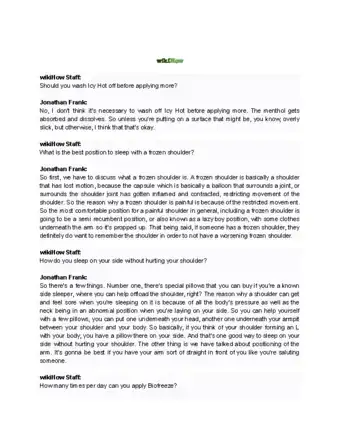
Thanks for reading our article! If you'd like to learn more about healing injuries, check out our in-depth interview with Jonathan Frank, MD.
References
- ↑ https://www.mayoclinic.org/drugs-supplements/capsaicin-topical-route/side-effects/drg-20062561?p=1
- ↑ https://www.icyhot.com/en-us/products/creams-rubs/pain-relief-cream
- ↑ https://consumermedsafety.org/drug-interactions-reactions-allergies/beware-of-adverse-effects-when-using-medicines-applied-to-the-skin
- ↑ https://www.icyhot.com/en-us/products/creams-rubs/pain-relief-cream
- ↑ https://www.drugs.com/mtm/icy-hot.html
- ↑ https://www.icyhot.com/en-us/products/creams-rubs/pain-relief-cream
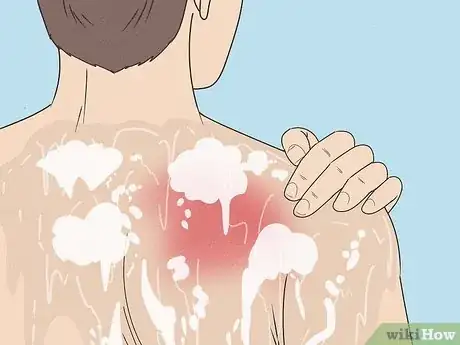
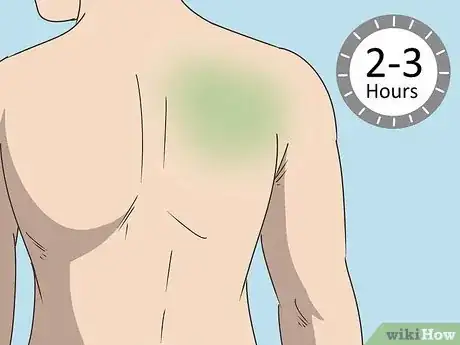
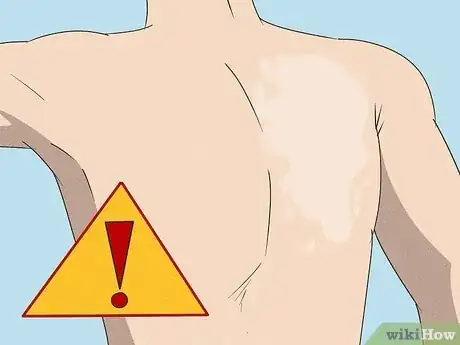
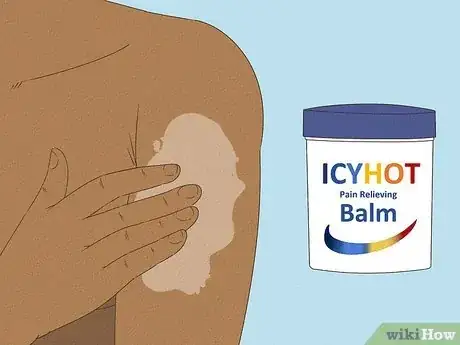










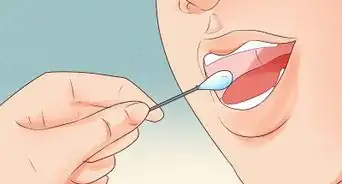

















































Medical Disclaimer
The content of this article is not intended to be a substitute for professional medical advice, examination, diagnosis, or treatment. You should always contact your doctor or other qualified healthcare professional before starting, changing, or stopping any kind of health treatment.
Read More...